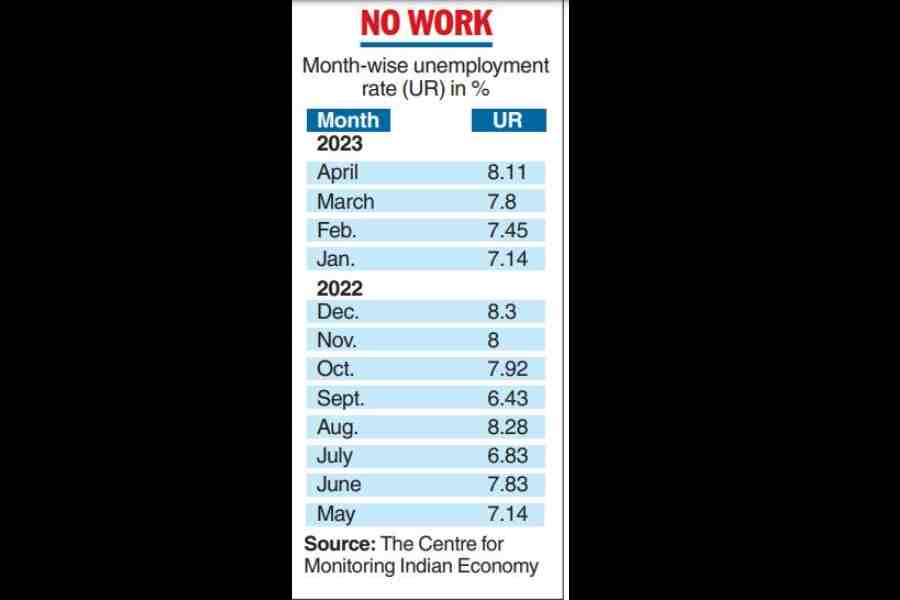When e-commerce company Amazon closed a warehouse last month in Sonipat, Haryana, it cost 800 people including Manju Goel their jobs.
Manju, who is in her mid-20s, has been unable to find another job — not because she lacks the qualifications but because there are “no suitable jobs”.
She said she had worked for over two years at the customer return department, checking and keeping the products returned by customers, and that the experience gained is usually helpful in securing similar warehouse jobs.
When Manju and her co-workers protested after the warehouse closure and demanded alternative jobs, the company offered the same jobs for the same salaries in its warehouse in Manesar, 95km from Sonipat, her hometown.
“It’s not possible to live in Manesar with an income of Rs 10,000,” Manju said, explaining she would have had to rent rooms in the industrial town, where the cost of living was higher, anyway.
“I’m looking for a job but there are no suitable jobs,” Manju said.
With the available jobs not increasing in proportion to the rise in the job-seeking population, the country is witnessing a high unemployment rate — the percentage of working-age people who are unemployed.
According to the private think tank, Centre for Monitoring Indian Economy (CMIE), the unemployment rate in India has risen steadily from 7.14 per cent in January this year to 7.45, 7.8 and 8.11 per cent in February, March and April, respectively. The figure was 8.3 per cent last December. (See chart)
Labour economists and activists said they disagreed with the Periodic Labour Force Survey (PLFS) reports of the central government’s National Statistical Office (NSO), which have been showing a consistent improvement in the unemployment rate.

The PLFS for 2021-22, released last March, put the unemployment rate at 4.1 per cent, down from 4.2 per cent in the PLFS for 2020-21.
Labour economist Santosh Mehrotra said the CMIE’s estimate of the unemployment rate was more reliable than that of the PLFS. He said this was so because, unlike the PLFS, the CMIE does not count people engaged in unpaid family labour —such as women helping out with running a shop or subsistence farming — as employed.
“The International Labour Organisation says that if the person is not paid for the work, it is not employment. The CMIE follows the same (principle),” Mehrotra said.
The downward trend in employment began in 2012. By 2017-18, India was down to an unemployment rate of 6.1 per cent — its highest in four decades — according to the PLFS for that financial year.
While the PLFS reports suggest an improvement since then, the CMIE data shows the situation has worsened despite the Covid-induced crisis having blown over, Mehrotra said.
Labour activist Dharmendra Kumar said that graduates and Class XII pass-outs were struggling to find regular jobs and were being forced to take up informal jobs.
The gig sector is expanding, with youths working as delivery personnel or drivers of Uber taxis, or signing up with aggregator companies as repairing agents, electricians or beauticians for hire. They have no fixed salaries.
“Corporate houses are gradually converting regular jobs into gig jobs. Youths are forced to sign up for survival. They know there is no job security or social security,” Kumar said.
Mehrotra said a developing economy tends to focus on creating more regular jobs in the manufacturing and service sectors. But agriculture has attracted more workers in recent years in India, mainly since the demonetisation of 2016. During the pandemic, the trend increased further.
With the manufacturing and service sectors not creating enough jobs, the proportion of youths aged 15 to 29 in the Not in Education, Employment or Training (NEET) situation in the country had risen to 32.9 per cent, according to the NSO’s Multiple Indicators Survey 2020-21.
Mehrotra said that youths in the NEET situation tended to get discouraged, stop looking for regular jobs and settle for informal jobs.
He suggested that the government offer special packages to sectors such as apparels, textiles, food processing, leather and furniture, so that they generate more jobs.












